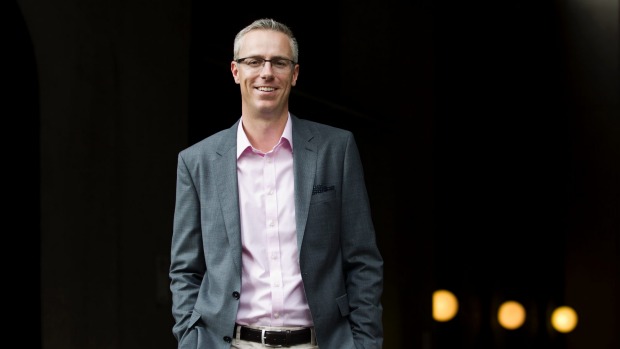
Chris Nave, managing director Brandon Capital, whose latest medical VC fund has raised $200m from industry super funds.
Four of the nation’s largest industry superannuation funds have backed a venture capital fund aiming to stem the tide of jobs and revenue generated by Australian medical science breakthroughs heading offshore.
Brandon Capital Partners’ third Medical Research Commercialisation Fund (MRCF 3) will announce this week it has raised $200 million from AustralianSuper, HESTA, StatewideSuper and Hostplus.
The deal represents the biggest venture capital commitment in Australia’s history and creates the nation’s biggest ever life sciences fund.
“Australia consistently ranks as one of the top nations for medical research, but one of the worst for bringing those discoveries to market,” Brandon Capital Partners managing director Chris Nave said.
Promising life sciences companies incubated by the group’s two earlier funds include Fibrotech Therapeutics, Global Kinetics Corporation, Osprey Medical Inc, PolyActiva, Spinifex Pharmaceuticals and Vaxxas.
The goal of the new MRCF 3 is to get in on the ground floor of early stage biotechnology ventures with the potential to grow into massive global companies, Mr Nave said.
“We want to find the next Cochlear, CSL or Resmed.”
Over 50 of Australia’s leading medical research institutes and research hospitals are collaborative members of the fund.
MCRF 3 has a first right to invest in discoveries from its hospital and university research partners. In exchange, all partners get a small share of the profits when one of the other partners earns a windfall, so all parties have an incentive to help their competitors succeed.
Mr Nave said the due diligence is already complete on four early stage ventures that will receive seed funding through MRCF 3.
One is Cardiora, an early stage novel drug therapy for heart failure being trialled at the Baker IDI Heart and Diabetes Institute.
Another is Auspherix, a group out of the i3 Institute developing a new class of compounds for treating highly resistance bacteria such as golden staph.
Also in line for seed funding from MRCF 3 is Aravax, a new vaccine for peanut allergy being developed at The Alfred Hospital Melbourne; and Longas, a molecular genetic sequencing technology being developed at the University of Technology, Sydney.
About one-quarter, or $50 million, of the new capital raised through MRCF 3 will be deployed as seed funding to take around 35 early stage ventures through a two-year incubation period. Mr Nave described it as a “fail fast” model and said he expects up to half of the initial crop to fail to qualify for the next funding round.
Those that do make the cut will be the recipients of the fund’s remaining $150 million in venture capital to fund human clinical trials. It is hoped a handful of ventures will come through this with “proof of concept” that can be taken to market in the fund’s third stage.
At this point, the four industry super fund partners will have the option to co-invest up to another $30 million in each new company.
AustralianSuper head of equities Innes McKeand? said Brandon Capital has shown its model stacks up favourably against the plethora of offshore biotech venture capital funds.
“This was a very compelling proposition because it provides access to a wide range of early stage companies, the model creates an alignment of interests between all parties, and we have the opportunity to make an additional investment in the most promising opportunities,” Mr McKeand said.
HESTA general manager investments Andrew Major said he chose to back the MRCF3 over bigger offshore players not only to support innovation in the local sector, but because the Brandon Capital team have shown with their previous two funds that their model can produce returns.
Gaining the confidence of some of Australia’s largest pension fund investors has been critical for Brandon Capital at a time when the government, which backed their MRCF 1 and MRCF 2, has withdrawn its support following the closure of the AusIndustry Innovation Investment Fund.
To date Brandon Capital has taken its success offshore in later funding rounds, as is typical for the sector. Mr Nave is hopeful that the larger scale of the new fund means it will be able to help more homegrown medical discoveries stay Australian owned into the commercialisation stage.
He criticised the government for failing to effectively leverage its significant investment in medical research into creating jobs for Australians. “The government spends roughly $5 billion per annum on early stage medical research but next to nothing on supporting the translation of those discoveries into patents or commercial enterprises,” Mr Nave said.
Mr Nave also wants the government to step in to change the way academic merit is recognised in the field of medicine science. “At the moment grant funding is all linked to getting a novel discovery published in a journal and very little credit is given to applying research in new life-changing treatments. That needs to change.”
Medical and pharmaceutical manufacturing is already the nation’s largest manufactured export sector and Mr Nave argues money spent subsidising the car manufacturing industry would be better spent supporting this growth industry.
